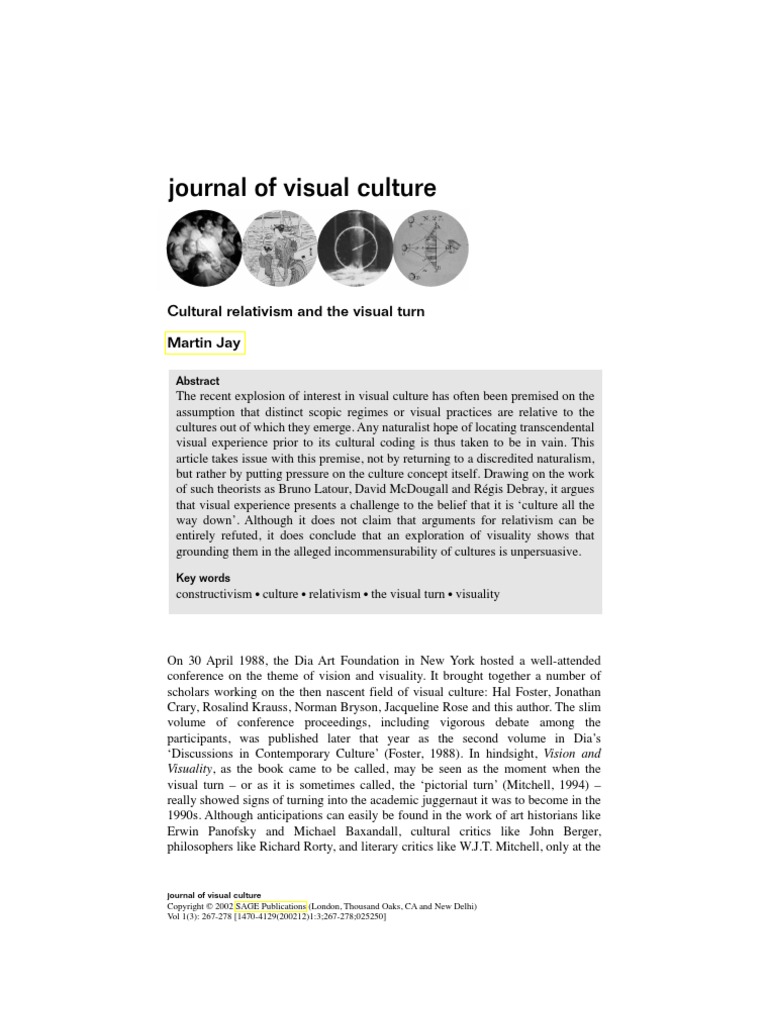Cultural relativism stands as a philosophical beacon, illuminating the diverse tapestry of human experience. This concept, advocating for the understanding of cultural practices in their own contexts, is particularly resonant in our increasingly interconnected world. The visual representation of cultural relativism, when dissected, reveals itself as a profound metaphor for the complexities and nuances of human life. In a manner akin to a kaleidoscope, each turn presents a new configuration, reflecting the myriad ways cultures interpret reality.
To delve deeper into cultural relativism through the lens of visual representation, one must first consider the intricacies of representation itself. Visuals serve not merely as passive interpretations but as active participants in the discourse surrounding culture. They challenge preconceived notions and urge viewers to reconsider their paradigms. The depiction of cultural practices — be it through photography, art, or film — provides an opportunity to experience the world through different prisms of understanding.
Imagine a canvas splashed with vibrant colors, each hue symbolizing various cultural expressions. The warm reds may represent the passionate rituals of a particular community, while cool blues could evoke the solemnity of religious traditions. This chromatic diversity encapsulates the idea that no single culture holds a monopoly on truth; rather, truth is molded by cultural, historical, and geographical contexts. This dynamic interplay invites an appreciation for the richness of human expression, akin to witnessing a botanical garden in full bloom. Each species — unique yet interconnected — embodies the essence of cultural relativism.
Visual representation also operates as a mirror reflecting societal tensions and intricacies. In moments of global crisis or cultural collision, visuals can provoke potent reactions — often igniting fierce debates about identity, authenticity, and appropriation. For instance, consider the portrayal of Indigenous cultures in contemporary media. A documentary might strive for authenticity and respect, yet it risks perpetuating stereotypes if not approached with cultural sensitivity. Therefore, the creation of visual narratives necessitates a delicate balance of representation and interpretation, akin to walking a tightrope suspended above a crowd eager to voice its opinions.
Moreover, the metaphor of a palimpsest is particularly pertinent in understanding cultural relativism in visual representation. Just as a palimpsest is a manuscript where the original text has been scraped away and overwritten with new content, visual images of cultures often carry layers of meaning from various historical and social contexts. An artistic depiction of a traditional dance may resonate with the heritage of a community, while simultaneously reflecting contemporary influences that have changed its performance over time. This layering of meanings constructs a rich narrative tapestry, encouraging viewers to peel back the layers and engage in a deeper dialogue about cultural significance.
In exploring visual representation, one must also acknowledge the role of technology as both a facilitator and a disruptor. The digital realm has democratized the production and dissemination of cultural visuals. Social media platforms enable individuals from diverse backgrounds to share their narratives and artistic expressions broadly, thus amplifying marginalized voices. However, this proliferation of images can also lead to a paradox of choice, where authentic representations are overshadowed by sensationalized versions aimed at garnering attention. Therefore, it becomes imperative for consumers of visual culture to approach such content with a discerning eye, recognizing the difference between genuine cultural representation and mere imitation.
Visual art, rooted in cultural relativism, becomes an exploration not just of aesthetics but of profound ethical implications. The ethical considerations surrounding representation involve questioning who is telling the story and for what purpose. Is the representation designed to educate and foster understanding, or does it perpetuate pre-existing power dynamics? The challenge lies in producing visuals that respect the voices of those depicted while inviting a broader audience into the conversation. This ethical engagement with culture parallels the notion of environmental stewardship, where sustainable practices honor the intrinsic value of both natural and cultural heritages.
Ultimately, the visual representation of cultural relativism can be likened to a symphony, where each instrument contributes to a harmonious composition. The melodies of various cultures — disparate yet interdependent — come together to create a singular experience that transcends individual narratives. This symphonic interplay cultivates a deeper appreciation for diversity, advocating for a world where cultural understanding flourishes. It invites individuals to explore the broader implications of belonging and identity, urging a commitment to coexistence and dialogue.
In conclusion, cultural relativism’s expression through visual representation serves as an invitation to embark on a journey of discovery within the vibrant landscape of human culture. It offers a lens to examine, challenge, and appreciate the rich interplay of various cultural narratives. Just as a painter draws upon an array of colors to evoke emotion and provoke thought, so too does cultural relativism champion the multifaceted human experience. This intricate dance of representation not only enhances our understanding of the world but also enriches our capacity for empathy, urging us to embrace the beauty of human diversity.
